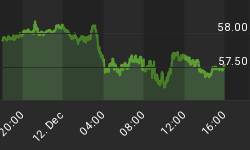The Normal Business Cycle
As refined by Martin Pring in his book The All-Season Investor, economic and stock cycles can be broken down into stages. The complete normal business cycle usually lasts approximately 42 - 54 months, but this typical length can be altered by monetary policy. Business activity goes from the despair of the depths of recession to the euphoria of the peaks of business expansion and back again. During this pendulum of activity the main investment vehicles - stocks, bonds and commodities - change in their perceived value. It is important to recognize where the pendulum of business activity is, in which direction it is swinging and the relative value of investment vehicles in the context of this cycle. Each of the six stages provides better risk/return for certain asset classes over others.

We are currently in late Stage 5 of the Business Cycle.

Stage 5 is a period in which the Fed raises interest rates in an attempt to slow business activity and curb inflation. This, in turn, causes bond yields to increase.
Rates have increased from 1 % 3 years ago, and are now at their highest level since April, 2001. In June, 2006, the US Federal Reserve raised interest rates for the 17th time in a row to 5.25 %. Other current global rates include 4 % in Europe, 5.5 % in the U.K., 8 % in New Zealand, and 0.5 % in Japan.
In a historic policy change, the Bank of Japan (BOJ) on 3/9/2006 scrapped its five-year-old super-loose monetary policy and returned to a more conventional regime, but said it would still keep short-term interest rates around zero for some time. Japan is the second biggest economy in the world, and their eventual move to a tightening policy will pressure our bond yields higher. During the past decade, the yen-carry trade has underpinned the global markets. Anyone who borrowed for next to nothing in Yen and bought U.S. Treasuries received a twofold payoff: the yield difference plus the dollar's rise versus the yen. But when the Bank of Japan eventually raises rates and more investors buy into Japan's revival, the yen is sure to rise, resulting in a rapid curtailment of the yen-carry trade. Realization that this trade is moving against investors may send shockwaves through global markets.

During Stage 5, stocks top out and begin the early phase of their bear market in anticipation of declining earnings. The bearish influence of falling bond prices (higher yields) pulls interest sensitive stocks downward. Eventually, the rest of the stock market will also begin to weaken. This downturn in the stock averages will often be accompanied by an upturn in certain tangible asset stock groups, such as energy and gold mining shares. Energy stocks usually lead the stock market near the end of an economic expansion, which is usually associated with rising oil prices. A spike in oil has preceded virtually every recession over the past 30 years.

The interest-sensitive Dow Utility Average tends to lead trend changes in the broader averages. In March, 2007, it breached its 200-day moving average for the first time since April, 2004, but then recovered stretching to new highs.

The Semiconductor Cycle is usually a good proxy for the general market's trend in relation to the business cycle. After a period of weakness in the second half of 2006, the SOX has recovered and currently remains above its 50-day and 200-day moving averages.
The Financial Select Sector SPDR tends to lead trend changes in the NYSE. The Banking Index peaked in February, 2007, but is currently testing support at its 300-day moving average.

The Fed target interest rate is highly correlated with the CRB, and commodity prices have a greater than 90% correlation with three important inflation measures (PPI, CPI, GNP deflator). Commodities during Stage 5 continue to enjoy increased valuation, as there is some considerable time lag between changes in interest rates and its effects on business activity. A huge part of this cyclical bull market has been the enormous growth in the Chinese economy and the upward price pressure that China's growth has exerted on Natural Resource prices of all kinds.
In Stage 6 of the Business Cycle, business activity is in decline and entering into recession.
Bonds, Stocks and Commodities are all bearish. Eventually the intention of increased interest rates takes effect and business activity declines. Gold peaks and commodity prices top out and begin their decline. Bonds continue to decline but they are approaching the end of their bear market. Stocks are in relentless decline.
These stage sequences are not in fixed time slots. The average recession varies from nine months to two years, the expansionary phase from one to three years. The relative duration of each stage and the overlap of stages varies from business cycle to business cycle. However, in any given cycle, monitoring the three investment categories will guide us fairly accurately through the course of the business cycle.
















